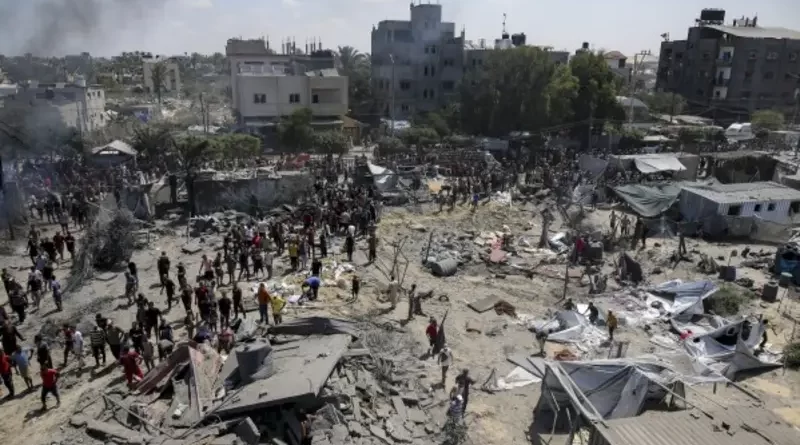Gaza peace plan: What we know about the first phase of agreement
US President Donald Trump has announced that Israel and Hamas have agreed to the first phase of a Gaza peace deal, marking the most significant step toward ending the devastating two-year conflict that has gripped the region.
The breakthrough comes after three days of indirect negotiations in Egypt, mediated by the US, Qatar, Turkey, and Egypt.
The agreement, described by Trump as the beginning of a “strong, durable, and everlasting peace,” was confirmed by both Israel and Hamas.
What has been announced
Trump revealed on his social media platform Truth Social that the deal guarantees the imminent release of all hostages and the withdrawal of Israeli troops to an agreed line inside Gaza.
“All parties will be treated fairly,” Trump wrote, calling the agreement “the first steps toward everlasting peace.”
Israeli Prime Minister Benjamin Netanyahu hailed the day as “a great day for Israel,” confirming that his cabinet would convene Thursday to ratify the deal and “bring all our dear hostages home.”
In its statement, Hamas said the agreement would “end the war in Gaza, ensure the complete withdrawal of the occupation forces, allow the entry of humanitarian aid, and implement a prisoner exchange.”
Negotiations were led by Trump’s Middle East envoy Steve Witkoff, alongside Jared Kushner, and supported by Egyptian, Qatari, and Turkish mediators.
What happens next
If approved by Israel’s government on Thursday, Israeli forces are expected to begin withdrawing from Gaza within 24 hours, according to a senior White House official cited by CBS News.
Once that withdrawal is completed, a 72-hour window will open during which Hamas must start releasing the living hostages.
US officials estimate the first hostages could be freed by Monday, marking a vital humanitarian step in the conflict.
What remains unclear
This initial phase represents only part of Trump’s broader 20-point Middle East peace plan, which Israel has accepted in full and Hamas has agreed to in part.
However, several key issues remain unresolved:
Disarmament of Hamas: Trump’s plan calls for Hamas to surrender its weapons, a condition the group has repeatedly rejected unless an independent Palestinian state is recognized.
Governance of Gaza: The proposal envisions a “technocratic, apolitical Palestinian committee” temporarily running Gaza before handing power to the Palestinian Authority. Netanyahu has voiced opposition to that transition.
Prisoner Exchange Details: Hamas has not yet received the final list of Palestinian prisoners to be freed by Israel. The US plan outlines the release of 250 life-sentence prisoners and 1,700 Gazans detained after October 7, 2023.
Reactions in Israel and Gaza
In Israel, families of hostages reacted with relief and joy.
Eli Sharabi, who lost several relatives in the war, wrote online: “Great joy, can’t wait to see everyone home.”
In Gaza, celebrations erupted across the streets. “Thank God for the ceasefire, the end of bloodshed,” said Abdul Majeed Abd Rabbo from Khan Younis. “All of Gaza is happy, all of the Arab world is happy.”
International response
UN Secretary-General António Guterres welcomed the agreement, urging all parties to “abide fully by the terms” and promising that the UN would scale up humanitarian aid and reconstruction efforts.
UK Prime Minister Keir Starmer called the deal “a moment of profound relief,” while Australian Prime Minister Anthony Albanese said it marked a “much-needed step toward peace.”
In Washington, lawmakers expressed cautious optimism.
“This is a first step, and all parties need to ensure this leads to an enduring end to the war,” said Senator Chris Coons.
Republican James Risch, chair of the Senate Foreign Relations Committee, added he looked forward to reviewing the deal’s details.
The Background
The agreement comes two years after Israel’s military campaign in Gaza began, following the October 7, 2023 Hamas-led attack that killed about 1,200 people and resulted in 251 hostages being taken.
Since then, more than 67,000 people have been killed in Gaza, including over 20,000 children, according to Gaza’s health ministry, figures that are considered credible by the UN though disputed by Israel.
Israel maintains that it has facilitated aid deliveries to Gaza and denies accusations of deliberately causing starvation.
